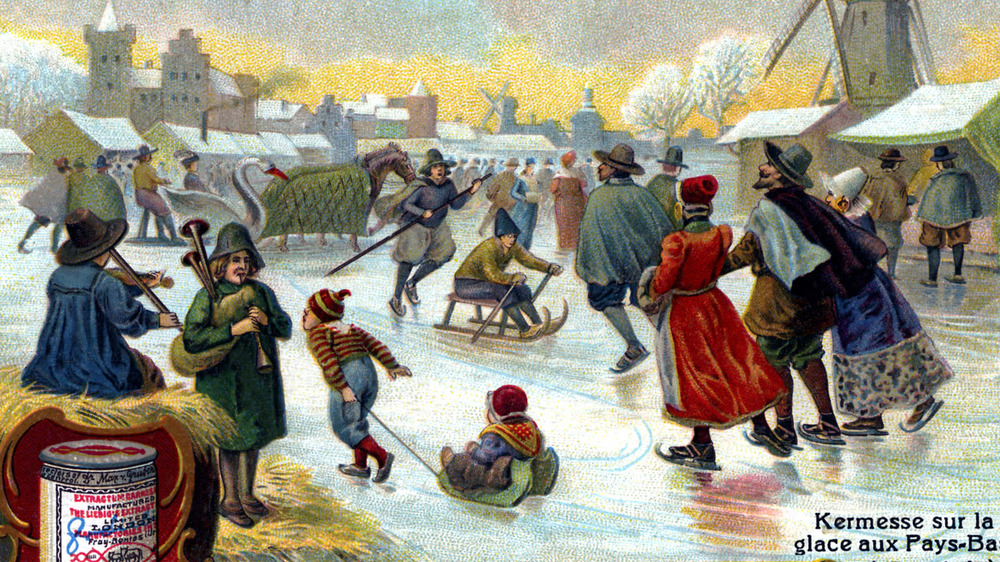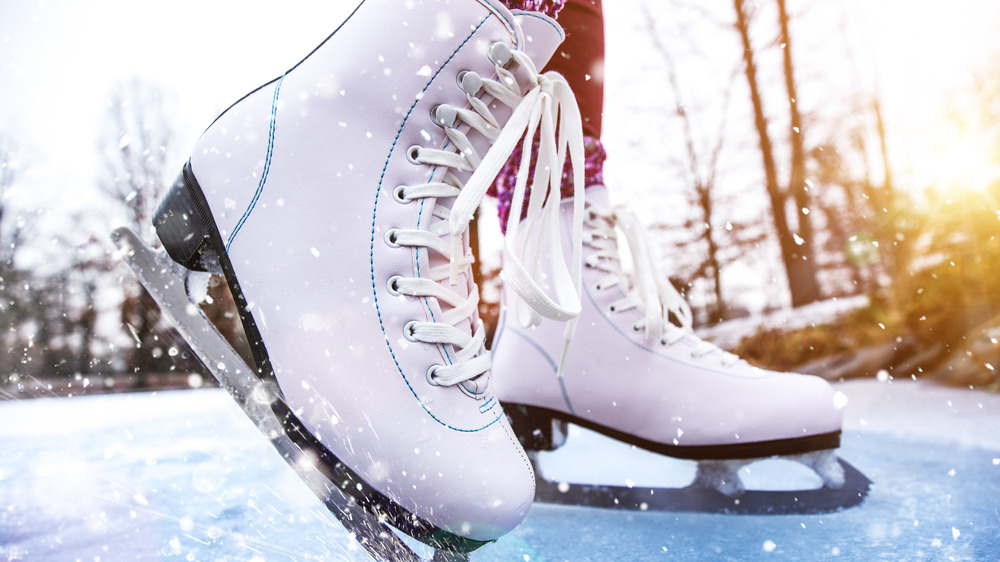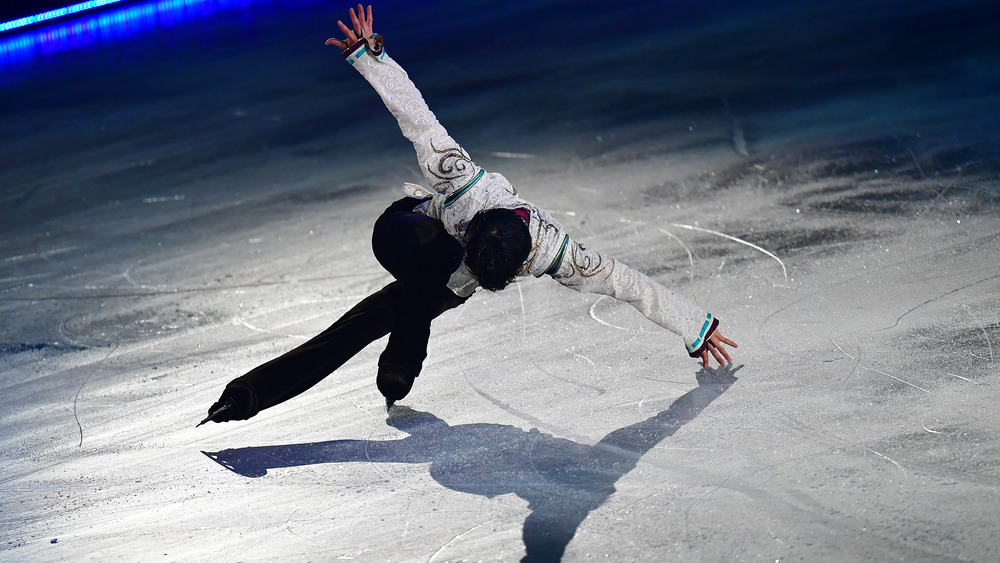The History Of Ice Skating
Before Michelle Kwan and Sasha Cohen battled it out to become America's favorite ice skater, someone had to invent ice skating. Not just the sport of figure skating, but the method of moving across a frozen pond itself.
The earliest evidence of people skating on ice was 5,000 years ago, explained Ancient Origins. Archaeologists found evidence of ice skating around that time in areas surrounding Scandinavia and Russia. They believe the Finns made the earliest skates in order to move across frozen water and away from predators efficiently. Also because Finland has more frozen lakes in 100 square kilometers than any other place on Earth.
Many of these early ice skates had blades made of bone, wrote ice skate maker Riedell. Unlike today's blades, which often feature sharp edges and a hollow bottom, these old skates were pretty dull. They were strapped to leather soles but made it difficult to have forward momentum. So people carried a long stick with them and used it to push off to skate and brake. They couldn't really use their legs to move. Science Friday described animal bones as the best materials at that time to use to make skates, because the fat they contained let people glide with less friction.
By the 13th century, people completely changed the way skates looked. Gone were the bones, replaced with a wooden block with some sharpened iron attached underneath. This meant people could finally use their legs to push off without a stick.
From bone to metal
Ice skates continued to evolve throughout the centuries. The Dutch made a lot of improvements in skates, and by the 15th century, they added a curl to the front of metal skating blades. Historians suspected these were mainly for fashion, but it helped skaters prevent accidentally sticking the blade's end on the ice and tripping. These blades had leather straps that people wrapped around their boots, though strong bindings were made later on.
Adding iron and metal to the skates, and ditching the bone, helped people skate faster, almost doubling average speeds. This additional speed allowed the Dutch to defeat the Spanish during the Battle of Ijsselmeer in 1572, said Riedell.
Around the 15th century, skating became a pastime rather than just a means of transportation, and this trend continued until the Victorian era. By 1742, the first skating club was established in Scotland, though it would be years before a strictly figure skating club would be created. Skating then didn't differentiate between speed skating and ice dancing. It was just all skating.
Still, people already saw skating's artistic potential. The first known account of figure skating as separate from speed skating was published in 1772. But it wasn't until the 19th century that figure skating and ice dancing were fully developed.
Will there ever be a quintuple jump?
American ballet dancer Jackson Haines thought to put together dance and ice skating. In the 1860s he would skate to music, performing fluid movements instead of the stiff actions people were used to. Figure skating before Haines meant drawing figures on the ice. History reported American audiences were baffled by what Haines was doing, so he decided to tour Europe to find a more receptive scene. Haines was applauded in Sweden, Russia, and Norway. He started incorporating leaps and spins into his routines, and attached blades to his boots to make the moves easier.
Today, not even Haines could recognize ice skating. Skates have evolved to suit their different sports. Speed skaters use very long blades to help them move faster, while hockey players use double-edged blades set inside plastic to make stopping easier. The long blades help distribute weight and are almost twice as long as those used in the 13th century. As for figure skating blades, the 20th century brought the toe-pick, a series of edges at the curled end of the blade to allow skaters to "catch" the ice and launch themselves into a jump.
Many jumps used today were invented in the 20th century (except for the axel, which Axel Paulsen invented while wearing speed skates in 1882). Odds are that Haines never expected anyone to do four quadruple jumps on the ice. But as you can see on YouTube, Yuzuru Hanyu did just that.


